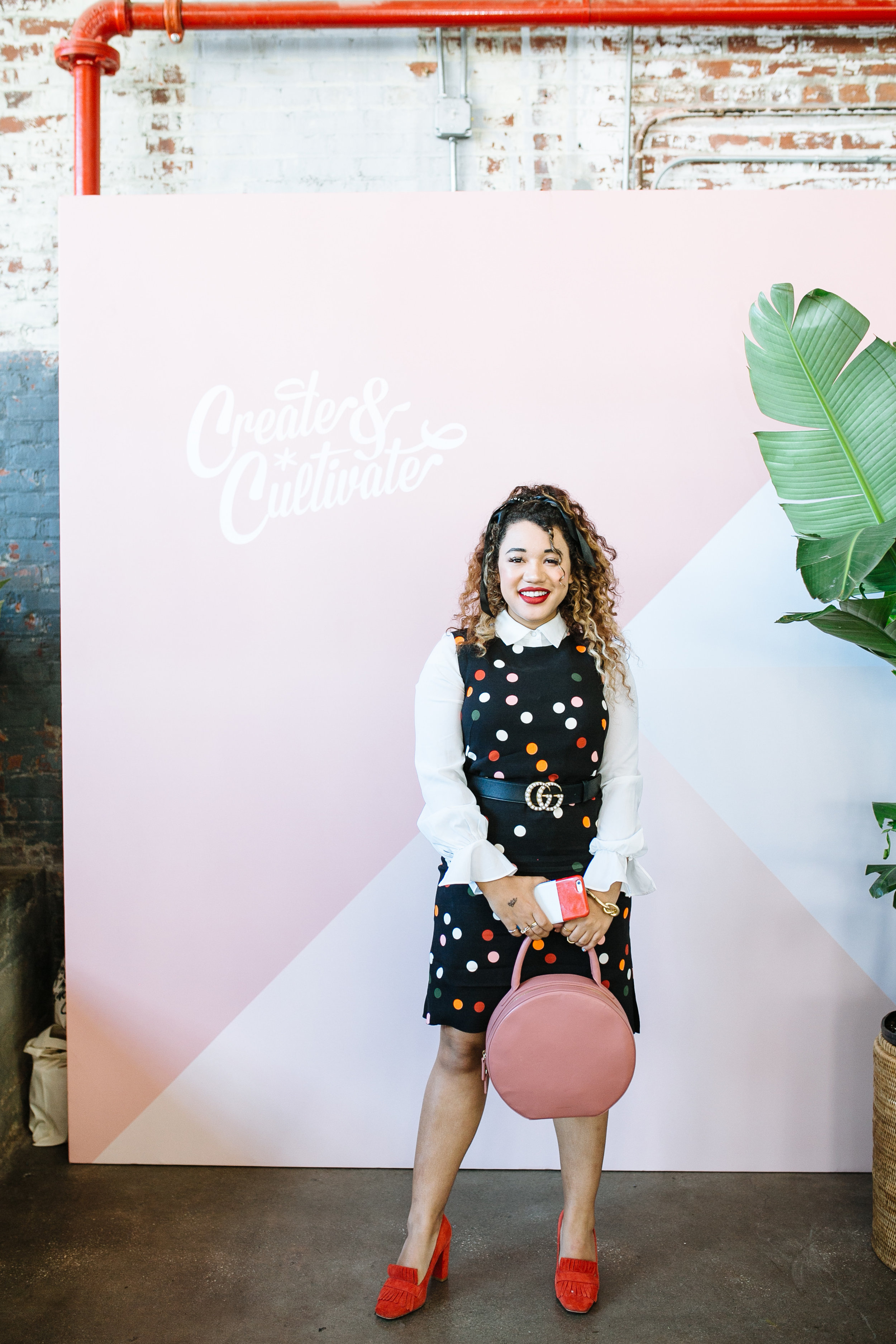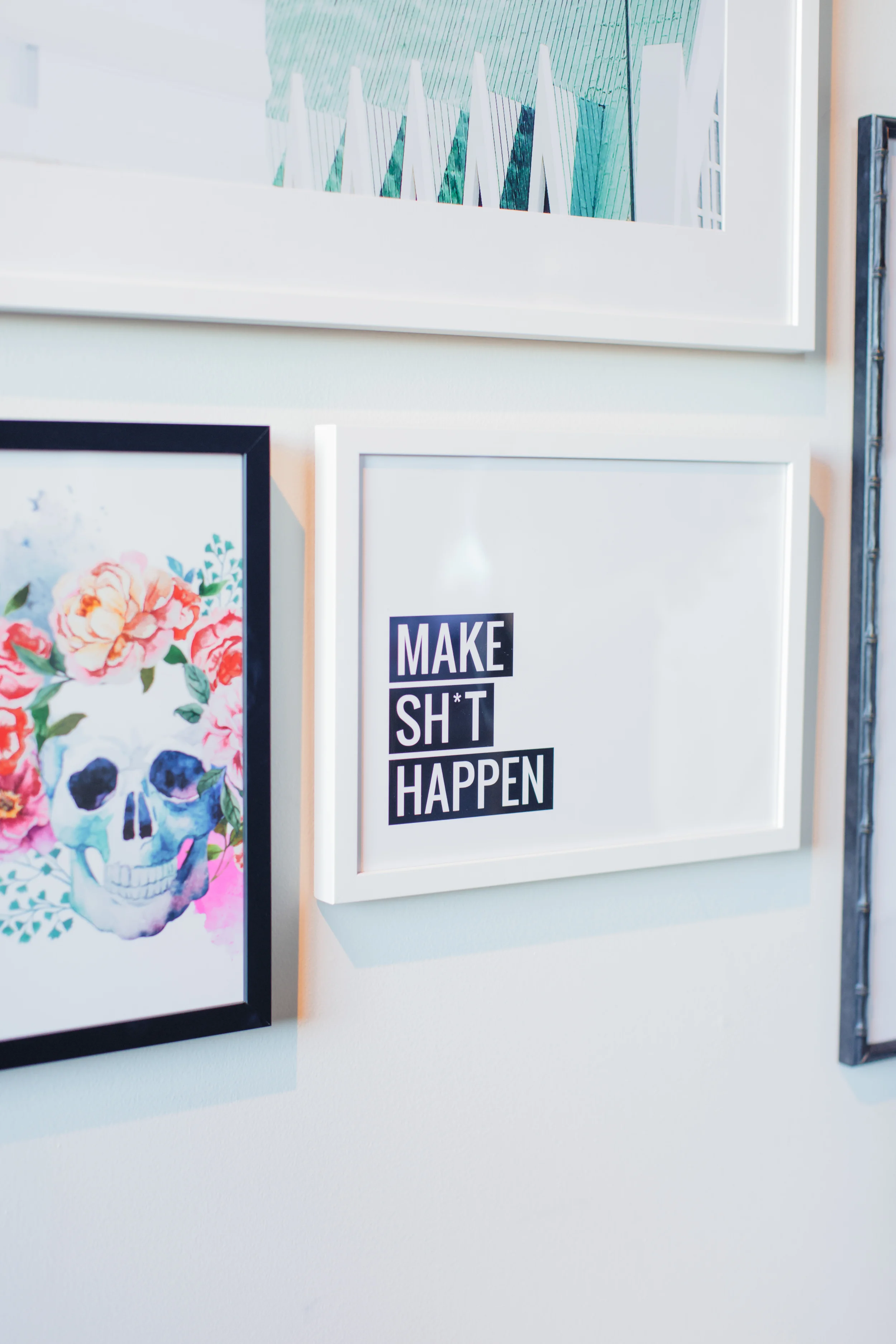5 Black Financial Educators Who Are Empowering Us to Take Control of Our Finances
Teaching us how to budget, pay off debt, and more.
Photo: Courtesy of Tonya Rapley
Welcome to 5 for 5, where we spotlight 5 women in 5 minutes or less.
It’s no secret that Black women are not paid fairly. On average, Black women are paid 37% less than white men and 20% less than white women for doing the same work, according to LeanIn.org. But despite the stats, Black women *can* build wealth. Ahead are five financial educators who are advocating for change, empowering women to take control of their finances, and pushing these stats in the right direction.
1. Dasha Kennedy
Dasha Kennedy, a.k.a. @thebrokeblackgirl, doesn’t hold back when it comes to sharing tips for assessing personal debt, reaching a big financial goal, and implementing a financial wellness self-care routine.
2. Tonya Rapley
The “Millennial Money Expert” and founder of My Fab Finance, Tonya Rapley, is on a mission to help 100,000 people make at least one money decision they’re proud of, whether it’s buying a home or saving money on a trip.
3. Tiffany Aliche
Known as @thebudgetnista on Instagram, Tiffany Aliche breaks down big goals like building wealth, paying off a mortgage, and buying a home while paying off student debt into achievable (dare we say simple) steps.
4. Marsha Barnes
The brains behind @thefinancebar, Marsha Barnes is a must-follow for friendly reminders to engage with your finances, adjust your budgeting plan, and start an emergency fund, as well as tips on how to follow through.
5. Jamila Souffrant
The founder of @journeytolaunch, Jamila Souffrant, is all about helping people grow their savings, get out of debt, and gain financial freedom and independence. (Psst… her podcast, Journey to Launch, is a must-listen!)
MORE ON THE BLOG
How to Triple Your Revenue in 2021
Simple, proven strategies for hitting that bottom line.
Photo: Smith House Photo
Let’s talk about revenue.
Building a business means setting aside time to map out revenue goals and growth strategies. Which can be a daunting task if you’re a dreamer with big financial goals for your business this year.
For those of you looking at your current balance sheet and wondering how in the world you’ll get there by the end of the year, I’m breaking down a few simple, proven strategies you can implement to see massive growth in hitting that bottom (or top) line.
1. Raise your prices.
Want to know the #1 way to increase revenue without adding additional work? RAISE YOUR PRICES.
Spend an afternoon doing a little internal audit of your services, products & pricing. Determine how many clients you need to book or products you need to sell this year to reach your stretch revenue goals. If it’s a lot...as in, that amount of work will leave you completely burnt out, it’s time to start charging more.
For example, if this year’s annual revenue goal for your design agency is $100,000 and your average service costs $2k, you will need to book 50 client projects this year to reach your goal. However, if you start charging $10k for that same package, you only need 10 clients. And if you book 50 clients, you’ll make $500,000 in revenue. Simple. But hugely profitable.
If you’re wondering if it’s time to raise your prices, here are a few things to consider…
What is the value of your product or service?
The first thing to look at when deciding to raise your prices is the value your service or product holds for your customers. Will your offerings allow them to raise their prices? Sell more of their products? Book more clients? Reach new audiences? Gain new opportunities? Automate their processes? The list goes on.
For example, we have seen our clients double their revenue and quadruple their client roster after working with us. We've seen them go from being a brand nobody has heard of to an iconic leader in their field. The websites we build for our clients have the potential to bring in hundreds of thousands of dollars in sales. We've helped our clients organize and effectively present information that's saved them time and money answering emails or hopping on long sales calls.
Your prices should reflect the value and ROI your product or service brings.
Are you presenting your brand in a way that LOOKS as valuable as it is?
How you present & position your offerings is EVERYTHING. Presentation adds perceived value. There is a reason why beautiful things cost more - they look more valuable.
Your potential clients and customers probably don't know how good your product or service is yet. All they have to go off of is the way it looks.
So ask yourself...
If I knew nothing about my brand, would I pay top dollar for what I'm selling?
Do my offerings look as high value as they are?
Do I stand out and compete with other brands in my industry?
If you answered "no" to any of those questions, it might be time to consider investing in a rebrand. You are probably leaving a lot of money on the table, purely because you don't look like the high-value brand or expert that you are.
What does the experience feel like for your customers?
What happens after the customer buys? Will their experience after purchasing reinforce their decision to buy from you? Was the experience one that will make them want to buy again? Will they tell their friends or colleagues about you?
The customer experience after purchase is just as important. For service-based businesses, this comes through in your client process, the way you communicate, how well the client feels taken care of and how your service is ultimately delivered. For product-based businesses, this is your unboxing experience, the culture you're creating, on-going customer exclusives and how you're building brand loyalty.
Oftentimes, the customers you already have are your best customers. How are you taking care of them and making them feel valued after they’ve purchased?
2. Invest in education.
New skills can help you reach more people, uplevel your current offerings and better establish yourself in your industry. If you want to increase revenue, you should continually be learning and developing your skills.
Start by identifying areas of your business that you wish you knew more about. Or think about services that would complement what you currently offer to offer clients and customers even more support.
Here are a couple of great needle-moving skills to invest in learning…
Marketing & Sales
Facebook Ad Management
Brand Strategy
Copywriting
Basic Graphic Design
3. Outsource and invest in support.
If you see growth in your immediate future, you will need to invest in additional support. As your business scales, so should your team. And as scary as it feels, you need to hire help before the growth comes so you’re ready when it does.
Start making decisions as your next-level self. This will allow you to grow faster, become more efficient, and handle even more growth in the coming year.
4. Develop content & products for a new audience.
Spend 20 minutes this week scrolling through your social media followers. Get to know them. Are your products or services for them? If 20% or more of your followers aren’t your ideal customer, you are leaving money on the table.
Take some time to think about a new product that you could offer. These people are clearly interested in something you currently do. But you haven’t given them an opportunity to convert.
Never underestimate the power of simply listening to what your audience is asking for. It’s probably something completely different than what you think you should offer. Or servicing a new audience entirely. But it will be the most aligned thing you ever do for your business.
Increasing your revenue means trying new things, taking new risks, and learning more than you ever have had before. Step into your next-level self and create a scalable path to revenue growth.
“New skills can help you reach more people, uplevel your current offerings and better establish yourself in your industry.”
—Ariel Garcia, Graphic Designer and Founder of ByAriel
Photo: Clarin J Photo
About the author: Ariel Garcia is a self-taught graphic designer and founder of the creative agency, ByAriel. She is committed to pushing the boundaries of creative innovation and carries that into each project, campaign, or brand she’s a part of. She also mentors graphic designers on developing their own unique style and artistry. Ariel’s typical day consists of several cups of coffee, logo designing, collaborating with clients, styling products, and planning her next adventure.
Love this story? Pin the below graphic to your Pinterest board.
MORE ON THE BLOG
I Got 20 Female Entrepreneurs Together and *This* Is Their Biggest Problem
Here’s how to fix it.
Photo: ColorJoy Stock by Christina Jones Photography
At an entrepreneurial meetup I hosted recently, I asked everyone to think of a high-end offer for their audience. Most of the women in the room had never offered anything at a premium price, but I was shocked when someone started telling the group about her experience doing so. “I run a successful, high-end seven-figure company, and have for over a decade, but every time I finish the year, I’m disappointed with profit margins hardly over 30%,” one entrepreneur told us.
She went on to explain that she charged a lot, but would also sometimes tell her clients that they didn’t need to pay for that month’s work or she would offer to do certain expensive tasks for free. Woah. High-end, but still scraping by? Not okay. But she’s not the only one. According to this study, self-employed men earn 28% more than self-employed women. Why is this? In my experience, it’s usually because women don’t charge enough for their services or they try to be too generous, which then leaves them with measly profit margins.
By and large, the #1 problem female entrepreneurs have is asking for an amount that not only covers costs but also leaves them with a healthy 70% profit margin. Here are three things you can do to reverse this and make more money in business.
1. Fire some clients.
If you have a client who doesn't want to pay what you're worth, don't hold on to them. Lovingly let them go. This will create space for more clients to come in that will gladly pay whatever rate you charge. And the secret truth is that the highest-paying clients are the easiest to work with, but you can’t serve them if you’re too busy with clients who don’t value you or your work. Trust that there’s more where that came from, set your boundaries, let difficult clients go, and focus on attracting higher-end clients that love you.
2. Overcompensate for costs.
If you think you need to charge $5,000 to cover costs and turn a profit, my advice is to double that. When you price an offering, putting in a buffer amount allows wiggle room for you to cover any extra time or expenses spent on a project. It’ll also ensure that if you need to hire help or invest in new material you won’t go in the red. This is especially important for product-based or project-based businesses that go off of cost estimates. Overestimate costs so that you can a) make more money and b) overdeliver on your service.
3. Charge a premium price.
To me, premium means anything above $1,000 a month. If you're charging a premium, you can take on fewer clients, do better work with them, but not suffer the loss of profit. You can have multiple tiers of offers to serve your client base, but having at least one premium offer is such a game-changer when it comes to scaling your business. Raise your rates and watch the magic happen as you work less and earn more.
I don’t know about you, but I’m done seeing women settling for “enough.” Setting the bar high for yourself and your business means you aren’t just a newbie in your field, you’re an expert. What naturally follows is increased profits and better clients.
“If you have a client who doesn't want to pay what you're worth, don't hold on to them.”
—Kimberly Lucht, Business Coach
About the author: Kimberly Lucht is a business coach who helps women make their first six figures doing what they love. She’s been featured in Money, Business Insider, Well + Good, Greatist, Create & Cultivate, and more.
Love this story? Pin the below graphic to your Pinterest board.
MORE ON THE BLOG
How Much Do You Make? Here's How to Tackle the Uncomfortable Questions
If it don't make dollars, it don't make sense.
Photo: Courtesy of Create & Cultivate
“Do you mind if I ask… ?” These are six little words that almost always preface questions about money, especially among female friends. “Do you mind if I ask how much that cost?” “Do you mind if I ask how much your rent is?” “Do you mind if I ask how much you make?”
Women have traditionally shied away from discussing personal finances, instead choosing to tiptoe rather clumsily around these conversations. But like anything else, if we don’t talk about it, we won’t get good at it. From asking for a raise to investing in a 401(k), there is so much good advice to be gleaned from your friend group.
Keep reading to learn a few ways to broach money talk with friends.
TALK SALARY OPENLY AND HONESTLY
Have an honest conversation with your friends about what they are making and their financial goals. The second part of this is equally as important as the first. Talking salary with friends can boost your financial confidence, which in turn can have a positive impact on your career. It can also highlight if you should be making more.
If you know your friends are making more money than you, use it as motivation to achieve your financial goals. Journalist Moira Forbes once told me, “If you can’t see it, you can’t be it.” See it, hear it, and share it—because the highest wave floats all boats.
ASK FOR ADVICE ABOUT RAISES
The raise conversation is a tricky one to have with colleagues because we don’t generally divulge our salary to our co-workers. If you’ve already had the salary talk with close friends, chatting over the realistic and unrealistic expectations of your raise will prove beneficial to all parties. However, because money is a sensitive topic, try to have the conversation with a friend who is paddling in a similar financial boat. Talking to a friend that makes significantly less than you could potentially strain the relationship. Talking to a friend that makes significantly more than you might have you reaching toward an unrealistic branch on the money tree.
Aim for the middle and be prepared to have a real talk about what you’re worth and why. A true friend will not only help prepare you for the convo, but will steer you in a realistic direction toward your goals. Understanding how to price yourself is paramount, and the more we understand the realities of others’ financial situations, the better we understand our own.
“Sharing salaries: if we don’t talk about it, we won’t get good at it.”
SHARE FINANCIAL MISSTEPS
Our relationship with money can sometimes feel like a bad marriage. We don’t talk about the things that bother us, instead choosing to sweep problems under the rug in the hopes that they might disappear. The great thing about true blue friendship is that you can talk about anything—especially when you’re not in the green.
Our friends are there to remind us that the idea of "keeping up" with others is one of the biggest illusions out there. If you thought you’d be making more, saving more, or wrapping up those student loans, it’s time to assess and call up a friend. Talking through missteps or how much you’re putting on your credit card every month will lend a little financial clarity.
MAKE A PACT TO BUDGET
Oh, the expensive inconvenience of convenience. Are you spending an absurd amount on apps like Uber and Postmates? It’s easy to push a button, but not so easy to stomach the end-of-month tally. If you have a habit of spending money on easy-come services, it’s time to sit down with friends and chat about how they save for their future. Make a pact with your BFF to delete apps like Postmates from your phone. You don’t need everything to be delivered to your doorstep, and doing it together makes it less painful.
BE AWARE OF OTHERS' FINANCIAL SITUATIONS
The friends who are married with kids. The single friend with a disposable income. The one who created an app and is rolling in dough. The reality is that most of your friends will be in very different financial situations. When you're the one trying to make ends meet, a simple dinner can be anxiety-inducing. Your friends may be buying bottles while you can barely afford a glass of the house red. A couple of things: If you know you can’t afford dinner, don’t go. The more transparent route is to make it known from the start of the meal that you can’t simply split the bill evenly. If they are truly your friends, they won’t care one little bit.
On the other hand, if it's your pockets that are heavy and you want to invite a friend to dinner, make sure to suggest a restaurant that you both can afford. What's better than Taco Tuesday? Be realistic and your friendship won’t become tense.
How do you talk about dollars with friends? Share below!
This post was originally published on December 22, 2017, and has since been updated.
MORE FROM OUR BLOG
5 Ways to Prepare for Self-Employment
But first, do the homework.
Photo credit: Sarah Natasha Photography
Nowadays the term “entrepreneur” is part of our normal vocabulary, but no one striking out on their own becomes an overnight success. If you’re thinking about pursuing self-employment and running your own company, here are five ways to properly prepare yourself for setting out on your own.
DO YOUR HOMEWORK
Self-employment is not for the faint of heart. If you are committed to pursuing the pros of working for yourself, you also have to be hyper-aware of the cons. As you contemplate leaving the financial stability of your corporate job, begin to evaluate the added stresses that come with being a company that is a party of one. For example, I thought critically about having to pay a very expensive health insurance bill every month where previously health insurance had somewhat silently been deducted from every paycheck.
"Self-employment is not for the faint of heart."
Tweet this.
I determined that the stress of that monthly payment would be more worthwhile than the stress I was feeling from my corporate gig where I was feeling unchallenged and unfulfilled. I also looked at what I would be doing from a day-to-day basis that couldn’t be covered by a team. I’d be offering clients my services from the ground up and they’d all be handled by me - no delegating up or down on a team. By thoroughly researching what your new normal will look like, you’ll be in for less of a shock when you become accountable only to yourself.
NETWORK
By far the most valuable thing I did in preparing for self-employment was tapping into my network. I began seeding to my friends, family and acquaintances that I was planning to leave my job to consult and one by one my network grew.
Everyone wanted to put me in touch with someone who’d had the courage to do what I was planning to do. I began speaking to loads of other freelancers and consultants and I came prepared to every meeting with a list of questions. Every encounter held a powerful and helpful takeaway and the more people I spoke with, the more my network expanded and the more business leads I started to pull in. Those I spoke with also were incredibly valuable when it came to setting the costs for my services, determining what tools I’d need to invest in and helping to provide guidance on how to successfully manage my business.
GET ORGANIZED OPERATIONALLY
There’s a lot that goes into operating your own business and some of the things may even surprise you. Before you leave your job for the land of self-employment, I recommend starting to get the pieces of the operational puzzle in place. One of the first steps I took was finding a lawyer who could incorporate my business. Then I set up a business banking account so I had a checking and a savings account for the company and also a credit card for all expenses. I got set up on Quickbooks to run the financial side of my business and also built a forecast so I was setting goals for myself to meet from a revenue standpoint.
"Before you leave your job for the land of self-employment get the pieces of the operational puzzle in place."
Tweet this.
Next came working with my lawyer to draft contracts and other necessary paperwork I would need to run my business from a client services perspective. I also developed a capabilities deck I could send to prospective clients, built a website, ordered business cards and developed a list of companies I was interested in speaking with. Once everything was done prior to leaving my job, it was easy to hit the ground running pursuing business because I had prepared all of my operational to-dos.
PLAN FINANCIALLY
Before you commence self-employment, you have to first accept that you won’t know from where your next paycheck is coming. Which translates to having to prepare financially for those inevitable times that you won’t have steady pay coming in. Knowing I lived in the most expensive city in the world, I put pen to paper to determine what living in New York was really costing me every month in regards to expenses. I signed up for a Mint.com account to build out a budget and for two months tracked my expenses. Once I had an idea of averages in particular categories, I built out an expense worksheet for myself that included rent, health insurance, groceries, travel, utilities, etc. I knew I wanted to have whatever that number was per month times six saved before I pulled the plug on my corporate job so that when the time came to dip into savings, I felt OK doing so.
"Do the math and start saving accordingly before you up and leave your job."
Tweet this.
Do the math and start saving accordingly before you up and leave your job. You’ll be far better off down the line for having done so.
THINK LONG TERM
When you begin working for yourself you’ll feel like you need to say yes to whatever initial projects come your way because you fear the unknown. But when you accept projects or clients that you don’t feel passionate about, you’re defeating one of the best perks of being your own boss: the ability to say no. While you certainly need to pay your bills, you shouldn’t take on work that you don’t feel capable of delivering on or for people or brands that don’t make you feel invested in the work. If you begin to take on projects you’re not jazzed about, you are limiting the hours you have a month to pursue and accept jobs that will not only give you income but also fulfillment.
Meghan Donovan is the founder of mmd communications, a public relations and influencer marketing agency in New York City helping to elevate lifestyle brands with dynamic, meaningful ideas. In addition to her decade of experience in the marketing industry for major brands like Procter & Gamble and Virgin America, she also pens the popular life + style site, wit & whimsy. You can read more about her journey to self-employment here.
MORE FROM OUR BLOG
ITK: How to Use Affiliate Links the Right Way
The money is out there. Do you know how to get it?
Where do content and commerce collide? “In a beautiful space,” said Amazon Fashion Director Kate Dimmock to a crowd of hundreds of women at Create & Cultivate NYC at the Knockdown Center in Brooklyn. “What’s important for you to know is that every piece of content that you create is shoppable and able to be linked to affiliate links,” she added.
And then the influencers took to Amazon Fashion’s "Content Meets Commerce" panel to share their tips on affiliate linking, how to navigate the content world, and what it means to be a successful blogger.
First they broke down some myths. The blogging world is “overcrowded.”
Or is it?
This is something we hear time and again, and what many members of our audience ask-- how do they break into an overcrowded market? How do they stand out from the pack?
Mary Orton, creator of Memorandum and co-founder and CEO of Trove, took a moment to break down the “so crowded” myth of the blogger world. “There are a lot of bloggers and content creators,” she shared, but then mentioned how many new restaurants open up in Manhattan. “Every time a restaurant opens on your block, you don’t say, oh no annoooother new restaurant. If you are being yourself. If you are presenting a unique POV, people will find it compelling. There is room for everybody. That’s important to keep in mind and don’t be discouraged by.”
Cynthia Andrew of SimplyCyn added, “Content is king. It’s really about what you bring to the conversation. “Every day I’m finding someone new and I’m following them and adding them. I wouldn’t say that it’s too saturated. But you have to understand that there is competition and it is harder to get eyes. Which is why you have to be consistent. You have to care about quality, more than quantity. There are people who post four times a day who aren’t adding anything to the conversation.”
Courtney of Color Me Courtney got her MBA young, at 21, but says she looked like “a numbers nerd on paper.” So she started her blog to break into the fashion industry in a less nerdy way. She told the audience, “Have true intent. The blogging game has changed in the last two years-- it has become a major monetization opportunity. But you shouldn’t start out to hit a bottom line. You should start to create content and to create community.”
"Have true intent. The blogging game has changed in the last two years-- but you shouldn’t start out to hit a bottom line."
Tweet this.
Lauryn Evarts of The Skinny Confidential advised the audience to “Think of a niche. I see a lot of girls get into blogging and they’ll email me and say, ‘I wanna be a lifestyle blogger.’ But that’s not where I would start. It’s so broad. Lifestyle blogger is the long-term play. Start niche. Like farming sea-monkey niche. And expand from there. You need to think about your niche as an upside-down triangle. The tip is your niche and the wide-part that you grow to is ‘lifestyle blogger.’ I think that is the trick to being a successful blogger.”
Content meets commerce-- it’s a relationship that goes hand-in-hand, but how do you do it?
This was the main question of the day: How do platforms work together to drive sales and earnings?
Mary Orton took on the big picture. “A lot of social platforms started out as a place that allowed quality content to thrive and content creators to be discovered. We’re seeing a lot of people struggling with that because these social platforms follow a similar life cycle. So ownership of your content is critically important,” she shared. “Be smart about where your content lives and that your business is diversified. You don’t want to become too dependent on a social media platform whose algorithm can change on a dime.”
So while you can make $ on sponsored IG posts, monetizing content on your platform with affiliate links and programs like Amazon Fashion’s are vital to the longevity and success of your business.
“My Instagram can go away tomorrow,” Evarts noted. Which is why she continually works on growing her audience on channels that aren’t beholden to someone else’s platform. “I didn’t go into blogging solely to monetize,” the outspoken blogger explained. “I went in to provide value. That’s one of the most important things. You need to establish value and trust with your readership before you think about money.” Orton echoed this sentiment saying, “Monetization opportunities will come. Any time you focus on monetization opportunities only, that’s when it comes across as commercial. It’s not only important to know this in the beginning, but throughout your journey.””
It was three years into blogging for Cynthia Andrew, who is attorney by day, blogger by night, when someone mentioned to her, “You should be using affiliate linking.” Andrew said it sounded like a “headache,” but then realized how much earning potential there is. Today she tries “not to overlink. I link to things I like. But I use it as an additional tool because brands want to see the information.”
“No one knows if you’re actually able to drive sales,” said Courtney, “but with affiliate linking you can show proof of concept to brands who want to see those numbers.” The colorful blogger also shared, “Now if I wear anything over a hundred dollars, I also link to something similar that is under a hundred dollars.”
"With affiliate linking you can show proof of concept to brands who want to see those numbers.”
Tweet this.
It all ties back to providing the most value and creating community among your followers. It’s not about selling out. “No one wants to be sold to,” said Lauryn. “Talking about something organically on your platform is so powerful.” Don’t forget it.
To learn more and sign up for the Amazon Fashion Influencer Program, please email fashion-influencer-program@amazon.com.
photo credit: Becki Smith/ Smith House Photography
MORE FROM OUR BLOG
Your Blog Is Money and You Don't Even Know It
Affiliate marketing is the gateway to $ marketing.
SO YOU'VE GOT A BLOG.
Your analytics are telling you that people are reading your content. Now you know you want to make the leap into monetization on your website without losing your authentic voice. What’s next?
AFFILIATE MARKETING.
I know it doesn’t sound sexy, but I can assure you, it is. This is your gateway to $$$!
Affiliate marketing at its core is simply placing trackable links within your content to get paid when your users shop. Aside from the obvious benefit of getting paid for promoting products you already love, affiliate marketing will give you data around your shoppers’ behaviors. This data will be crucial for you as you learn about your demographic. You’ll gain insights into what products and brands your readers respond to. You can then use these statistics and success stories as part of your media kit and story when speaking to brands and marketing yourself. You’ve just armed yourself to become an insanely professional, money-making machine.
[define it: Affiliate Marketing: At its core this practice is simply placing trackable links within your content to get paid when your users shop.]
You are probably wondering where you go to get these mysterious monetizable links. If you haven’t already, create an account on ShopStyle Collective, ShopStyle’s influencer network. You’re going to be able to access links, data on your link performance, and insights into your shoppers’ behaviors in one handy login. There’s even an app so you can monetize on the go!
Now that you’ve got your ShopStyle Collective account, there are a variety of ways to create links. You can do so within the interface, use the toolbar link generator, or create widgets for your blog. It’s fairly self-explanatory.
Now that we’ve discussed why and how, let’s talk about the most important issue: where.
You don’t want your site to look like one big advertisement, nor do you want to miss out on opportunities to earn revenue. The goal with affiliate marketing is to build upon content you are creating organically and simply add another layer of visual interest, while driving your readers to brands and products you love.
"The goal with affiliate marketing is to build upon content you are creating organically."
Tweet this.
Affiliate marketing also gives you a lens through which to think about your content calendar — do you want to create entire style guides for a season with looks for every occasion? Link those products! Create gift guides for holidays and special occasions. I personally love content where bloggers create how-tos and share ideas for how to wear trends or incorporate statement pieces. One of my favorite bloggers, The12ish Style, does a series where she re-creates celebrity looks in her own unique style. I actually just bought a sweater today from one of these posts (proof they actually work!).
KEY TIPS FOR PLACING LINKS
Make sure you are hyperlinking any photographs on your blog to the primary item you are showcasing.
Always use text and hyperlink, describing your products right underneath the top photo of your post — many readers won’t scroll down to read your entire post.
Hyperlink any text that describes a product throughout your post.
Provide alternatives — if you are showing a $2,000 Chloé bag, you can contrast that with a more affordable bag in a similar style as an added opportunity to drive traffic and convert your readers into shoppers.
Another great spot for links is within a scrolling widget beneath your post. ShopStyle Collective’s widget helps you generate a scrolling visual where you can add multiple product options beneath each post. These products can be directly related to your content or they can be another place to get fun and creative. Let’s say you are posting an amazing recipe for truffle french fries or a crazy-cool birthday cake. You can include your favorite cooking tools, new apron, dishes, or serving pieces in the widget beneath the post to impart additional visuals, stylish objects, and drive more traffic to shopping partners. The idea here is to give your readers access to your aspirational lifestyle, which they already want to re-create for themselves (and their own Instagrams).
One more idea: use the widgets for vacation packing lists — so necessary (and shoppable) with all the summer travel opportunities right around the corner!
Hilary Sloan leads ShopStyle’s North American business development team and works with top brands like Net-a-Porter.com, Saks Fifth Avenue, and Barneys New York to monetize via affiliate and creative partnerships. In building relationships with brands and working with ShopStyle and ShopStyle Collective’s blogger community, she realized that many young bloggers don’t quite have the tools to get started on building their business. She’s spoken in the past at Create + Cultivate, IFB, and other blogger conferences on the topic of monetization, revenue, and brand partnerships. When not at ShopStyle, Hilary can be found applying all her skills to her own mini influencer, her dog, Ella Bean.





























